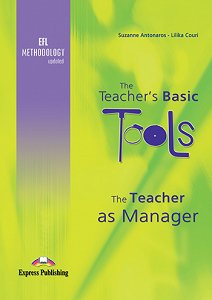Classes are unpredictable: a particular lesson may work well in one class and fall flat in another. Keeping certain processes unchanged will help you build structure and create the signifiers you need to keep your class under control no matter the circumstances!
Here are some useful rules of thumb to help you provide effective learning experiences in every lesson:
- Make it meaningful: Know what your objective is for each lesson and let your students know too. At the end, ask them to evaluate their learning against the criteia you set at the very beginning.
- Make it student-centric: Teach your students, not the book. Get to know them and divide them into groups that foster meaningful interactions among them.
- Be in control: Look through the materials you’re going to use and write brief notes or headings to remind yourself of goals, times, and alternative activities you may need to exploit. Anticipate potential issues, decide on groups in advance and keep high-achievers busy.
- Make it rich: Vary activities, but ensure they fit together to construct a smooth, coherent sequence. Activities may be fast or slow, easy or difficult, fun or serious. Students may work alone, in pairs or groups, or in a whole class interaction with the teacher. They may speak, read, listen or write.
- Draw their attention: Ensure you’ve got their attention before you start the lesson and make sure learners know and follow any routines you’ve given (such as always having books and writing materials on their desks, bags off the desks and are seated appropriately).
- Ask instruction and concept-checking questions: When doing group work, give instructions and ensure these are understood before dividing into groups. You might demonstrate the task with some students as purely verbal instructions may not be clearly comprehended.
- Keep the time: Tell the students how long activities should last and keep an eye on the clock yourself. You don’t want to run out of time for key tasks at the end.
- First things first: Don’t wait till the bell rings to give homework. Students will start packing up and not be attentive. Give any homework earlier, ensure they’ve written it down and remind them at the end.
- Teach accountability: Assign roles to students to engage them further and give them agency. These tasks can be as simple as handing out material or as empowering as leading group work.
- Keep everyone involved: Ensure all students are engaged throughout the lesson. This doesn’t mean they are all speaking English all the time. Some learners may be quiet, but passively taking in a lot.
- Observe colleagues' lessons: Share experiences with colleagues – drop in on each other’s lessons and see how they manage lessons.
Following classroom routines is essential! It allows students to quickly accomplish day-to-day tasks and helps create smoother transitions between activities, allowing fewer disruptions to occur.
Which routines are you going to set? Read our article and set your own structure baseline!












